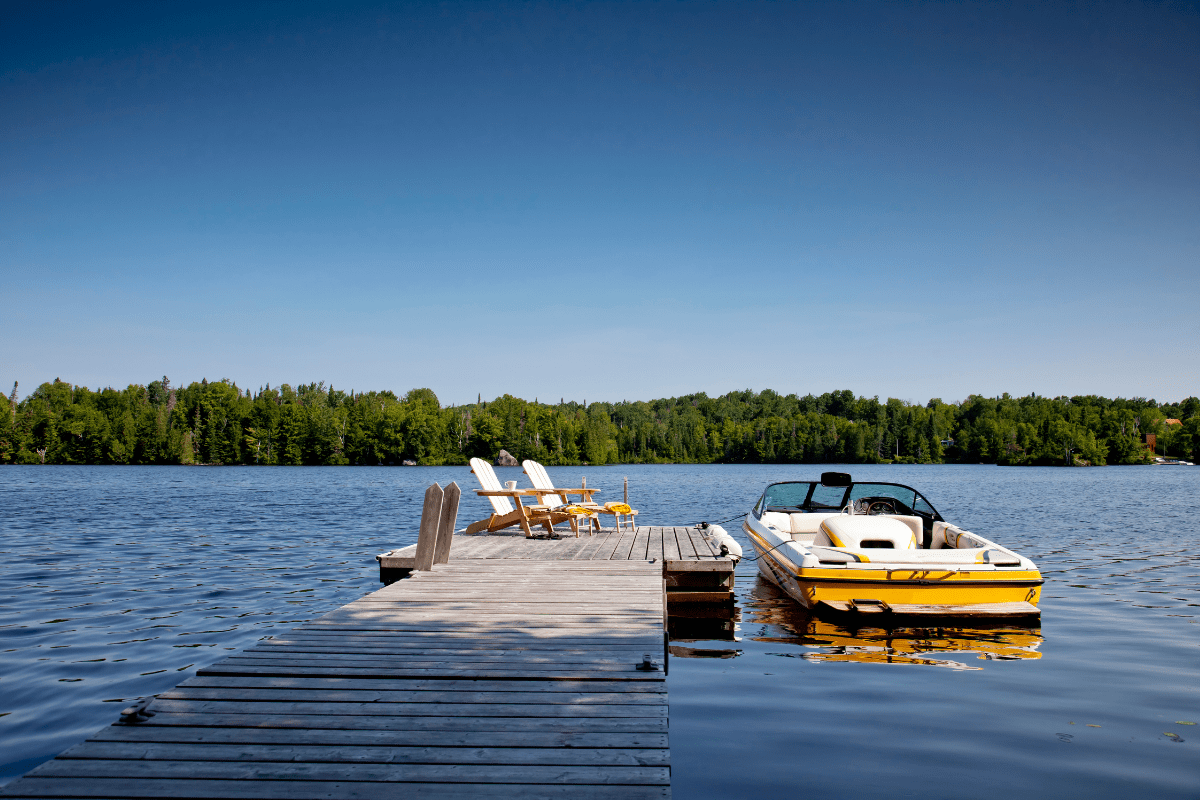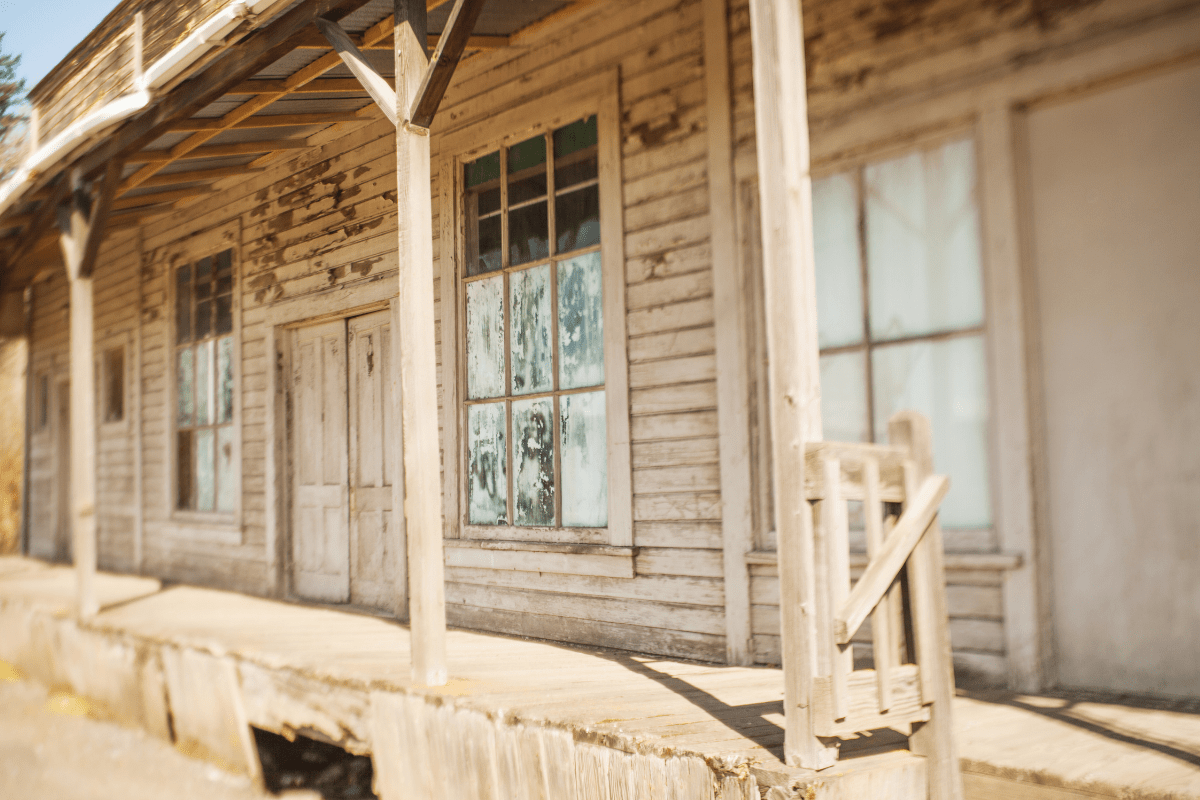Oklahoma has more shoreline than the Atlantic and Gulf coasts combined. Yes, you read that correctly… landlocked Oklahoma somehow pulled off this geographic magic trick with over 200 man-made lakes that turned a prairie state into an unlikely water recreation powerhouse.
The lakes you actually want to visit
Let's be honest: not all lakes are created equal. Some Oklahoma lakes look like chocolate milk after a good rain, while others stay crystal clear even in July. If you're planning a trip and don't want to waste your precious weekend at a mediocre mudhole, here's where the locals actually go.
For swimming without squinting through murk
Lake Tenkiller consistently wins the clarity contest. This spring-fed beauty maintains visibility up to 40 feet, which explains why scuba divers actually drive to eastern Oklahoma on purpose. The lake even has its own underwater attractions including a submerged school bus, helicopter, and airplane at depths reaching 165 feet. Because apparently someone decided regular lake activities weren't interesting enough.
Broken Bow Lake in the Ouachita Mountains offers that postcard-worthy mountain lake experience you'd expect in Colorado, not Oklahoma. With depths reaching 169 feet and consistently clear water, it's where Oklahomans go when they want to pretend they're not in Oklahoma. Lake Murray rounds out the clear water trifecta, though honestly, "clear" is relative when you're comparing to farm pond standards.
For catching fish bigger than your toddler
Lake Texoma has somehow earned the title "Striper Capital of the World," which sounds made up but isn't. This massive lake produced a 98-pound blue catfish that probably could have eaten a small dog. The lake attracts 6 million visitors annually, though half of them are probably just Texans arguing about which state owns the better side.
Grand Lake O' the Cherokees serves as bass fishing headquarters, hosting the Bassmaster Classic multiple times because apparently professional anglers enjoy 100-degree summer days too. The lake also supports the world's largest paddlefish population, including a 164-pound monster caught at nearby Keystone Lake that looked more like a prehistoric creature than a fish.
Fort Gibson Lake recently made headlines when someone hauled in a 73.6-pound blue catfish in 2023, proving that Oklahoma catfish are basically underwater linebackers. Lake Eufaula offers excellent crappie fishing year-round, and yes, we're all mature enough to say "crappie" without giggling.
What it actually costs to play on the water
Nobody likes surprise fees, so let's talk money before you show up with your wallet at home.
The government's cut (licenses and permits)
Fishing licenses will set residents back $31 annually, while out-of-staters pay $81 because apparently crossing state lines makes fish harder to catch. Lake Texoma requires its own special $12 license that works for both Oklahoma and Texas sides, because the fish don't respect borders either. Kids under 18 can get a "super license" for $26, which sounds way cooler than it actually is. Seniors over 65 score a lifetime license for just $30, probably the best deal the government offers on anything.
If you're bringing a boat, it needs proper registration unless you enjoy conversations with lake patrol. Oklahoma City lakes charge an extra $6.25 daily or $33 annually just to launch, because apparently maintaining boat ramps costs more than NASA's budget.
State parks charge $8 for residents and $10 for visitors just to park, though veterans and seniors over 62 get in free because Oklahoma actually respects its elders. Annual passes run $60 for locals and $75 for outsiders, which pays for itself after about seven visits if you're counting.
The big three: Lakes that think they're oceans
Some Oklahoma lakes are so massive they have their own weather systems. Okay, that's an exaggeration, but not by much.
Lake Eufaula: The one that's actually bigger than some states
Lake Eufaula sprawls across 102,000 to 105,500 acres with 833 miles of shoreline, making it the 34th largest lake in the entire United States. Built in 1964 by the Army Corps of Engineers (who apparently had a lot of free time), it reaches depths of 90 feet. The lake has multiple state parks because one wouldn't be nearly enough to handle all the weekend warriors with bass boats.
Grand Lake: Where rich people park their yachts
Grand Lake boasts 46,500 acres with an absolutely ridiculous 1,300 miles of shoreline… more than California's entire coastline. Completed in 1940 with what was then the world's longest multiple arch dam (because Oklahoma had to win at something), it reaches depths of 133 feet.
The lake supports over 10 marinas, including the Cherokee Yacht Club with 170 covered slips ranging from 30 to 70 feet. That's where people with boats worth more than your house hang out. H2O Sports Rentals operates four locations around the lake for those of us who can't afford watercraft insurance.
Lake Texoma: The overachiever
Straddling the Oklahoma-Texas border like it can't pick a side, Lake Texoma covers 89,000 to 93,000 acres with depths reaching 100 to 142 feet depending on who's measuring. With 2.6 million acre-feet of water, it's got the largest volume in the state. The self-proclaimed "Playground of the Southwest" sees 6 million visitors annually, though traffic on the bridge suggests it's actually 12 million.
Where to actually stay (and what's worth seeing)
Lake Murray State Park represents everything right about Oklahoma's lake development… and a few things that are charmingly wrong.
Lake Murray: Oklahoma's attempt at a resort destination
As the state's oldest and largest park at 12,500 acres, Lake Murray tries really hard to be fancy. The park features a 32-room lodge that hasn't been updated since your parents honeymooned there, 56 cabins including some that actually float (because why not), and an 18-hole golf course where you can lose balls to both water hazards and actual fish.
The park's crown jewel remains Tucker Tower, a 65-foot stone structure built in 1933 as a governor's retreat. Now it's a geological museum where kids can touch rocks and parents can enjoy the air conditioning. The tower offers panoramic views and frequent bald eagle sightings, though the eagles are probably just judging your boat parking skills.
The park maintains six campgrounds with over 400 sites, ranging from primitive "hope you brought bug spray" spots to full RV hookups for those who think camping means bringing your entire house with you. Sites book weeks in advance during summer because apparently everyone discovers they love nature at exactly the same time.
The fishing intel you actually need
Spring fishing starts when water hits 62 to 65 degrees, triggering bass spawning season and transforming normally rational people into obsessed anglers who check water temps more than their email. White bass runs begin in the high 40s, creating what experts call a "fast and furious bite" and what beginners call "the one time I actually caught something."
The real insider tip? Cut shad works as catfish bait statewide, though your hands will smell like dead fish for three days afterward. Professional guides like Lance's Guide Service charge $300 to $500 for half-day trips, which sounds expensive until you realize they actually know where the fish are hiding.
The trout situation (yes, Oklahoma has trout)
The state stocks trout year-round below Broken Bow Dam and Tenkiller Dam, because apparently someone decided Oklahoma needed mountain fish too. From November through March, they also stock Blue River, Medicine Creek, and various urban ponds where city kids can pretend they're fly fishing in Montana.
The stuff nobody talks about
Here's the truth about Oklahoma lakes that tourist brochures conveniently skip.
Water quality: It's complicated
Some lakes stay clear, others look like someone dissolved a Snickers bar in them. Blue-green algae blooms have become the summer buzzkill nobody ordered, causing a 19% drop in visitation when warnings go up. The 2022 Grand Lake bloom hit 17 micrograms per liter, which is science-speak for "don't let your dog drink this."
The state monitors 80 lakes quarterly on a five-year rotation, which sounds thorough until you realize that means your favorite swimming hole might go four years without a checkup. Cities test their water supply lakes more frequently because lawsuits are expensive.
The 2025 reality check
Federal hiring freezes mean 38 Tulsa District lakes face temporary closures and reduced services. Canton, Copan, Fort Supply, and Tenkiller lakes got hit particularly hard, with multiple areas closed because apparently the government forgot lakes need employees.
Southwest Oklahoma is also dealing with returning drought conditions, which is perfect timing since everyone just bought new boats. The situation changes weekly, so check before you drive three hours to find a closed boat ramp.
The rules that will get you yelled at
Every lake has that one angry guy who knows all the rules. Don't be his entertainment.
Key regulations for not being "that person":
- Keep blood alcohol under 0.08%
- Stay 150 feet from other boats
- Maintain 100 feet from shoreline wakes
- Respect 11 PM quiet hours
- Leave glass bottles at home
- Keep dogs leashed (10 feet max)
- Book campsites in advance online
- Remember boats need education certificates under 16
The boating education requirement means your teenager needs a certificate to drive the boat, but somehow doesn't need one to drive your car to school. State parks enforce quiet hours religiously, and that one camping neighbor with the bluetooth speaker will definitely get reported.
Why Oklahoma has 200 fake lakes anyway
Here's a fun fact to impress nobody: Oklahoma only has 62 natural lakes, and the biggest covers just 272 acres. Everything else came from politicians like Senator Robert S. Kerr who decided Oklahoma needed lakes and apparently had really good lobbyists.
Most lakes were built between the 1940s and 1970s for flood control after the 1927 Mississippi River flood destroyed everything downstream. Oklahoma just happened to realize these flood control reservoirs made excellent bass fishing holes and started calling them lakes. Marketing genius or geographic deception? You decide.
Actually useful planning tips
Cell phone coverage varies from 95% with AT&T to "hope you brought a compass" in remote areas. Download offline maps unless you enjoy asking bass fishermen for directions.
Visit in spring or fall when the weather doesn't feel like standing in a convection oven and the water stays clearer. Summer brings crowds who all discovered lake life simultaneously, turning boat ramps into anger management workshops. Book camping spots through ReserveAmerica.com weeks ahead, because the good sites with shade go faster than beer at a fishing tournament.
Oklahoma's lakes generate $11.8 billion annually and attract over 10 million state park visitors, proving that sometimes the best beach doesn't need an ocean. Just don't mention that to Texas.





